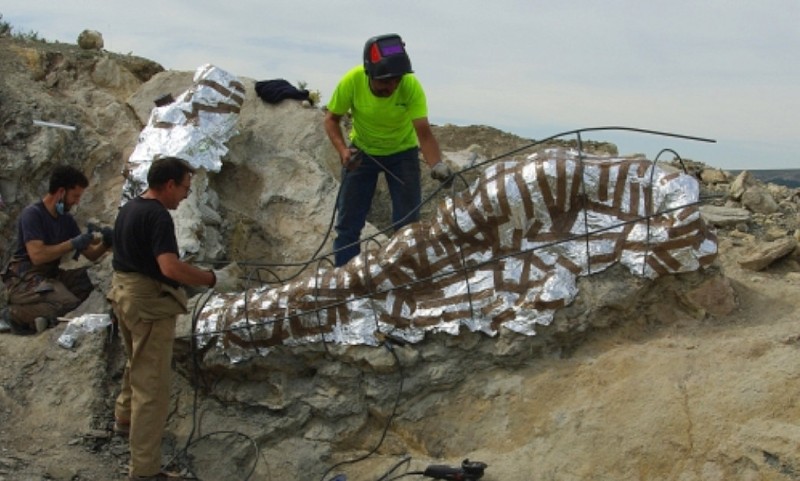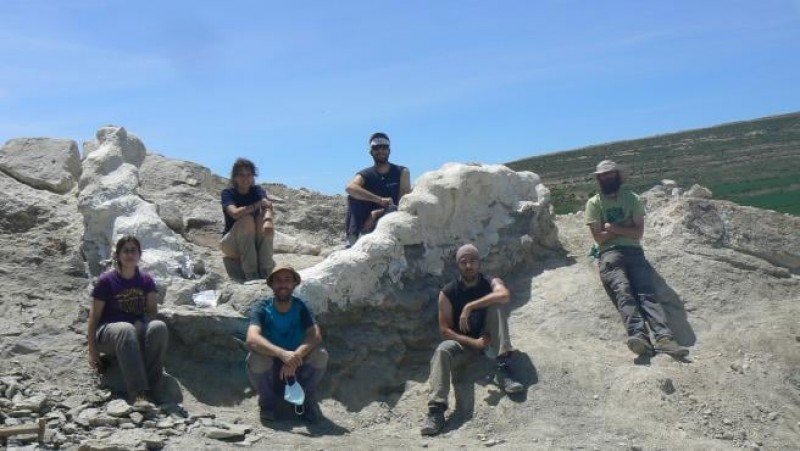ARCHIVED - 145-million-year-old dinosaur neckbone fossil discovered in Teruel
The bones belonged to a 25-metre sauropod which could be a previously undocumented species
The province of Teruel is one of the least heavily populated in Spain but has become increasingly well-known in recent years as the “dinosaur capital” of the country – it is home to the “Dinópolis” theme park as well as numerous other dino-related sites – and its reputation has been strengthened still further by the discovery of a 5-metre-long section of spinal column belonging to a giant reptile which roamed the Iberian Peninsula approximately 145 million years ago.
The new finding is the most complete collection of articulated vertebrae belonging to a giant sauropod ever found in Spain, and was unearthed in Camarillas, in the centre of the province, during a dig funded by the Aragón regional government and the local Town Hall. The excavations have been carried out by the Aragosaurus-IUCA team from the University of Zaragoza, led by Diego Castanera, and the Miquel Crusafont Palaeontology Institute of Catalunya.
Each vertebra is a round 30 centimetres long and the distance between them suggests that their owner could have measured over 25 metres in length, making it one of the largest to have lived in Europe. Although the animal has been identified as a giant sauropod the exact species is not known, and it may be one which has never been documented before.

The sheer size of the fossil made it extremely difficult to disinter and it was necessary to cut it into two in order to avoid it breaking under its own weight before removing the pieces to be studied in detail.
The dinosaur fossil site at Camarillas was first discovered by a local resident and has yielded over 80 fossils: most of them belonged to sauropods but others related to carnivorous dinosaurs or to ancient pre-historic crocodiles, and plant fossils have also been found.
Image: Diego Castanera

































